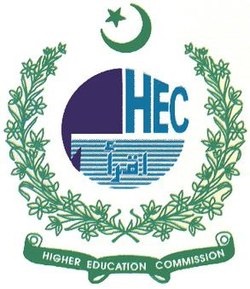ANALYSIS OF MILK CONSUMPTION PATTERN IN PAKISTAN: USING LA/AIDS
DOI:
https://doi.org/10.61506/Keywords:
income elasticities, price elasticities, milk consumption of householdAbstract
This paper provides the estimation of complete milk product demand elasticity matrix in case of Pakistan. Milk products are categorized into fresh milk, lassi and tetra pack milk.LA/ AIDS model is run by using HIES survey data from 2018to 2019. Own & cross-price and consumers’ income elasticities are estimated to find the impact of variation in the price of milk products and income. The outcome of Marshallian own-price elasticity for milk products reveals that prices & demand of milk product has inverse relation. Expenditures elasticities of milk product expose them as luxury items (elastic goods). The results of uncompensated cross price elasticities reveal that fresh milk and tetra pack milk are substitutable commodities while fresh milk and lassi are complementary goods. In developing countries like Pakistan, it is necessary for food policy makers to considers the price elasticities while imposing the taxes on the milk product. Milk products are basic food items and imposition of tax on these products could reduce the consumption of low-class households as well as middle class household and both have to face the problem of food security.
References
Akram, N. (2020). Household’s demand for Food Commodities in Pakistan: Issues and Empirical Evidence. Estudios, 47.
Buse, A. (1994). Evaluating the Llinearized Almost Ideal Demand System. American Journal of Agricultural Economics.
Christensen, L. R., Jorgenson, D. W., & Law, L. J. (1975). Transcedental logarithmic utility functions. The American Economic Review, 65(3), 367-383.
Deaton, A., & Muellbawer, J. (1980). An Almost Ideal Demand System. The American Economic Review, 70, 312-326.
Farooq, U. (2016). Milk Supplies in Pakistan: Issues and Challenges Facing the Dairy Economy. Pakistan Agricultural Research Council.
Gerosa, S., & Skoet, J. (2012). Milk availability:trendsin production and demand medium-term outlook. Agriculture Developmnet Economic Division,Food and AgricultureOrganization of the United Nations.
Hameed, A., Haq, U. I., & Salam, A. (2021). Estimating Food Consumption Patterns in Pakistan by Using Ideal Demand System. Sarhad Journal of Agriculture, 37.
Haq, Z., Nazli, H., Meilke, K., Ishaq, M., Khattak, A., Hashmi, A. H., & Rehman, F. U. (2011). Food demand patterns in Pakistani Punjab. Sarhad Journal of Agriculture, 27(2).
Hayat, N., Hussain, A., & Yousaf, H. (2016). Food Demand in Pakistan: Analysis and Projections. Soutj Asia Economic Journal, 17, 94-113.
Khoiriyah, N., Anindita, R., Hanani, N., & Muhaimin, A. W. (2020). Animal Food Demand in Indonesia: A Quadratic Almost Ideal Demand System Approach. AGRIS on-line Papers in Economics and Informatics, 12(665-2020-1237), 85-97.
Mithal, S. (2010). Application of the QUAIDS model th the food sector in India. Journal of Quantitative economic:Journal of the Indian Econometric Society.
Paul, N., Tony, R., & Neil, K. (2000). Long Run Drift Co-Movemnet and Persistence in Real Wealth & Maize Prices. Journal of Agriculture Economics, 51.
Prais, s. J., & Houthakher, H. S. (1955). The Analysis of Family Budget.Second impression and Abridged. Cambridge University Press.
Shah, A., Saboor, A., & Ahmad, S. (2009). An Estimation of cost of milk production in Pakistan: A Microeconomic approach. Sarhad Journal of Agriculture , 25.
Shah, S. B., Mu, Y., Abbas, G., Pavase, T. R., Mohsin, M., Ali, M., et al. (2018). An economic analysis of the fisheries sector of Pakistan (1950-2017): Challenges, opportunities and development strategies. International Journal of Fisheries and Aquatic Studies, 6(2), 515-524.
Stone, R. (1954). Linear expenditure system and demand analysis:an application to the pattern of British demand. The Economic Journal, 255(64), 511-527.
Taljaard, P., Alemu, Z., & Van, H. (2004). The demand for meat in South Africa:An Almost Ideal Estimation . Schalkwyk.
Theil, H. (1969). A multinomial extension of the linear logit model. International economic review, 3(10), 251-259.
Ullah, I., (2018). Food consumption in Pakistan: Applications of linear approximate almost ideal demand system (LA/AIDS), Doctoral dissertation, The University of Agriculture, Peshawar.


